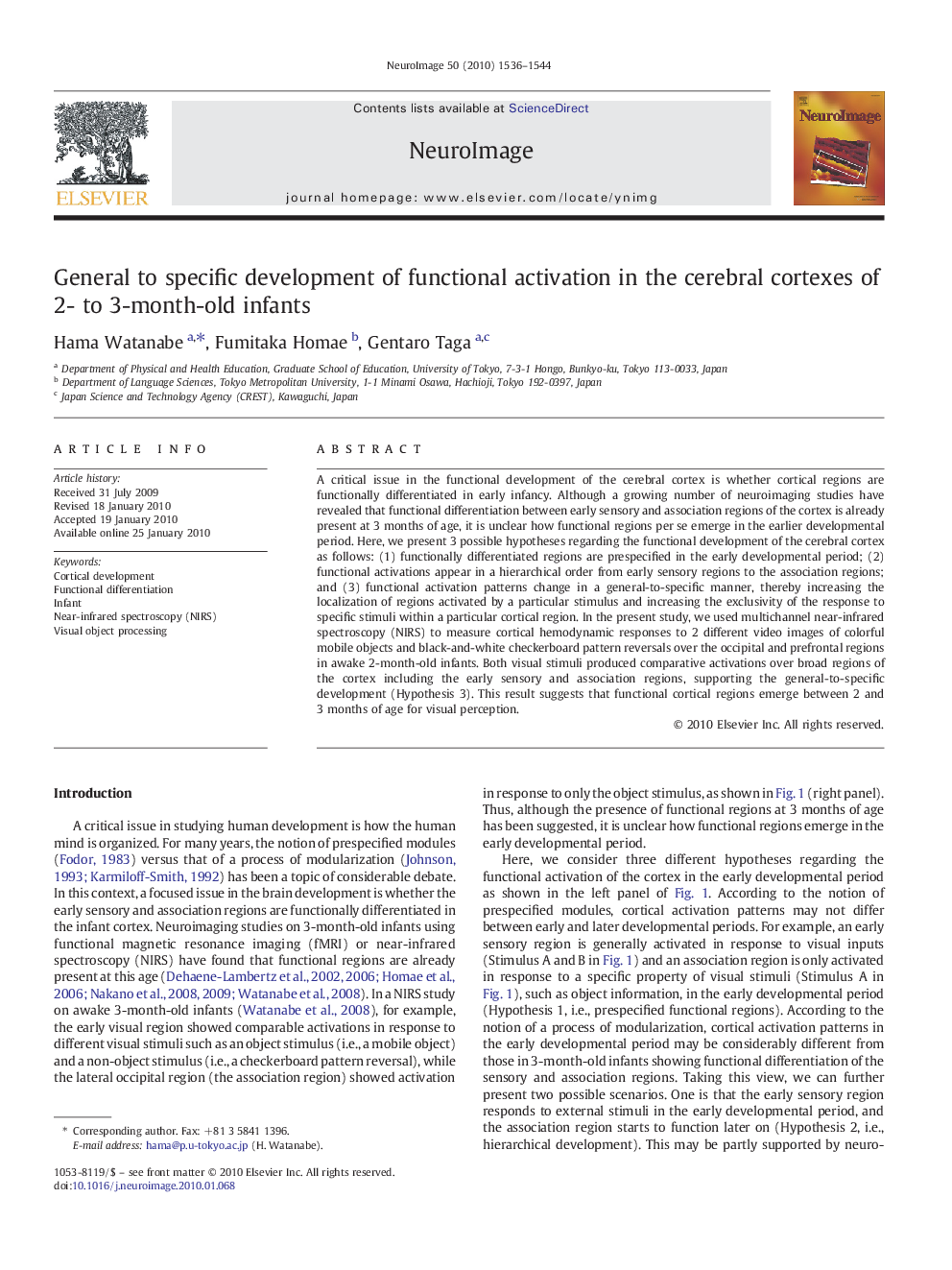| Article ID | Journal | Published Year | Pages | File Type |
|---|---|---|---|---|
| 6037318 | NeuroImage | 2010 | 9 Pages |
Abstract
A critical issue in the functional development of the cerebral cortex is whether cortical regions are functionally differentiated in early infancy. Although a growing number of neuroimaging studies have revealed that functional differentiation between early sensory and association regions of the cortex is already present at 3Â months of age, it is unclear how functional regions per se emerge in the earlier developmental period. Here, we present 3 possible hypotheses regarding the functional development of the cerebral cortex as follows: (1) functionally differentiated regions are prespecified in the early developmental period; (2) functional activations appear in a hierarchical order from early sensory regions to the association regions; and (3) functional activation patterns change in a general-to-specific manner, thereby increasing the localization of regions activated by a particular stimulus and increasing the exclusivity of the response to specific stimuli within a particular cortical region. In the present study, we used multichannel near-infrared spectroscopy (NIRS) to measure cortical hemodynamic responses to 2 different video images of colorful mobile objects and black-and-white checkerboard pattern reversals over the occipital and prefrontal regions in awake 2-month-old infants. Both visual stimuli produced comparative activations over broad regions of the cortex including the early sensory and association regions, supporting the general-to-specific development (Hypothesis 3). This result suggests that functional cortical regions emerge between 2 and 3 months of age for visual perception.
Related Topics
Life Sciences
Neuroscience
Cognitive Neuroscience
Authors
Hama Watanabe, Fumitaka Homae, Gentaro Taga,
